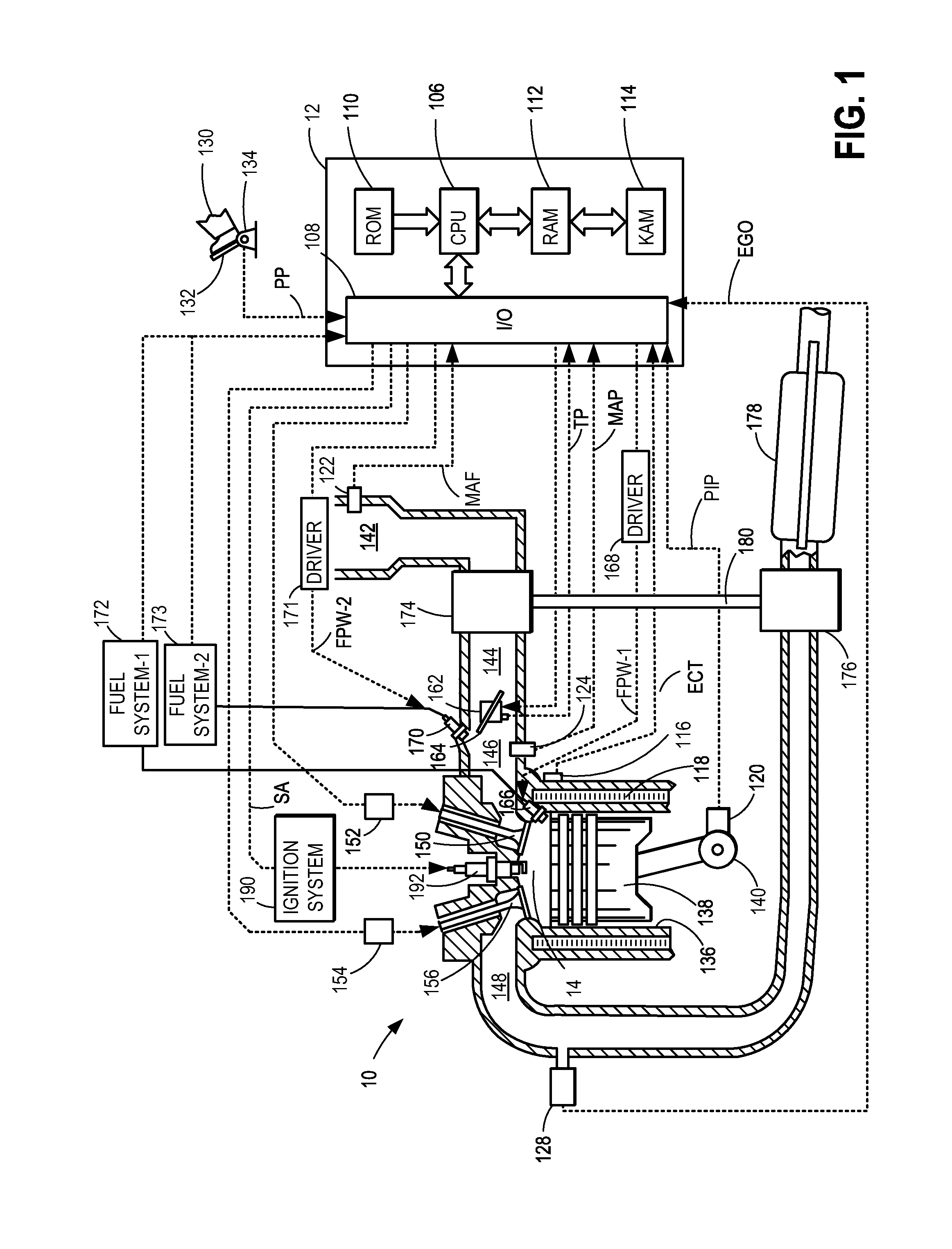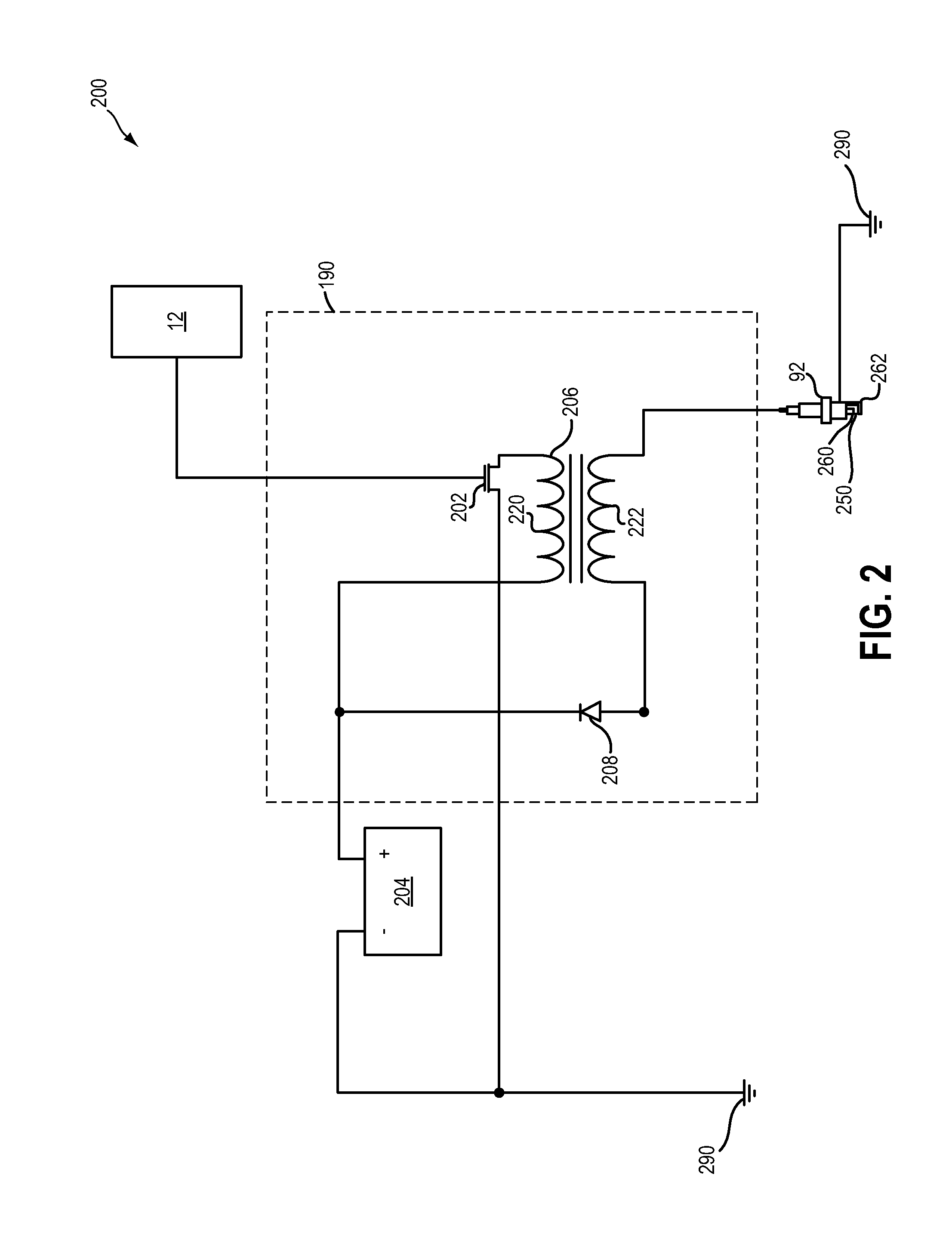Method and system for ignition energy control
a technology of ignition energy and control system, applied in the direction of electric control, ignition automatic control, machines/engines, etc., can solve the problems of component durability problems, over-use of spark energy, incomplete combustion, etc., to increase the heat of vaporization, increase the charge cooling effect, and increase the octane
- Summary
- Abstract
- Description
- Claims
- Application Information
AI Technical Summary
Benefits of technology
Problems solved by technology
Method used
Image
Examples
Embodiment Construction
[0021]The present description is related to improved ignition energy management in a spark ignition engine, such as the engine of FIG. 1. The engine may be configured with a single coil ignition system, as described at FIG. 2, or a dual coil ignition system, as described at FIG. 3. An engine controller may be configured to perform a control routine, such as the example routine of FIGS. 4-5, to adjust an ignition coil dwell command (for either ignition system) and a delay in discharging (for dual coil ignition systems) based on cylinder fueling, including based on one or more fuels received in the cylinder and fuel injection type. The controller may accordingly adjust how long a charging current is applied as well as when the ignition coil stored energy is discharged to the spark plug on a given cylinder combustion event (FIGS. 6-7). Example trends are shown with reference to the maps of FIG. 8. An example adjustment in spark output with changing cylinder fueling is shown with refere...
PUM
 Login to View More
Login to View More Abstract
Description
Claims
Application Information
 Login to View More
Login to View More - R&D
- Intellectual Property
- Life Sciences
- Materials
- Tech Scout
- Unparalleled Data Quality
- Higher Quality Content
- 60% Fewer Hallucinations
Browse by: Latest US Patents, China's latest patents, Technical Efficacy Thesaurus, Application Domain, Technology Topic, Popular Technical Reports.
© 2025 PatSnap. All rights reserved.Legal|Privacy policy|Modern Slavery Act Transparency Statement|Sitemap|About US| Contact US: help@patsnap.com



